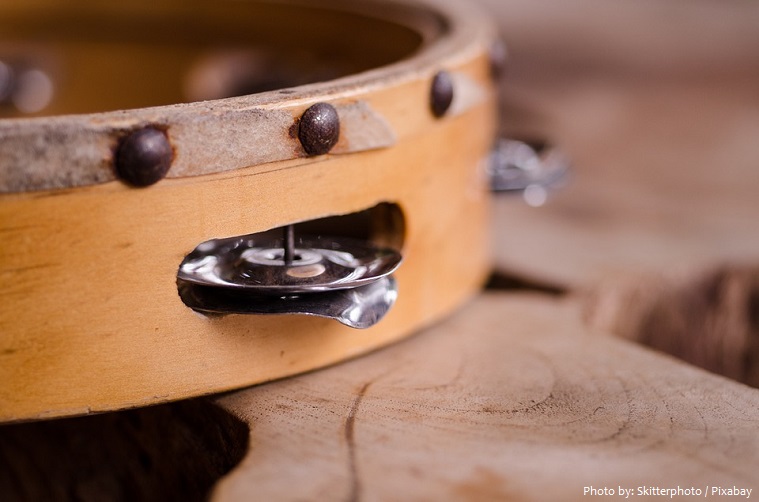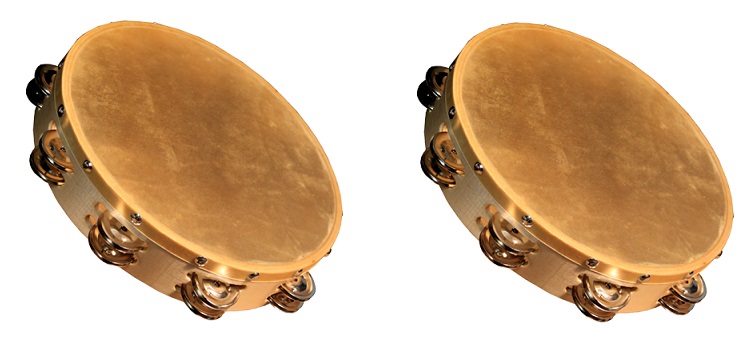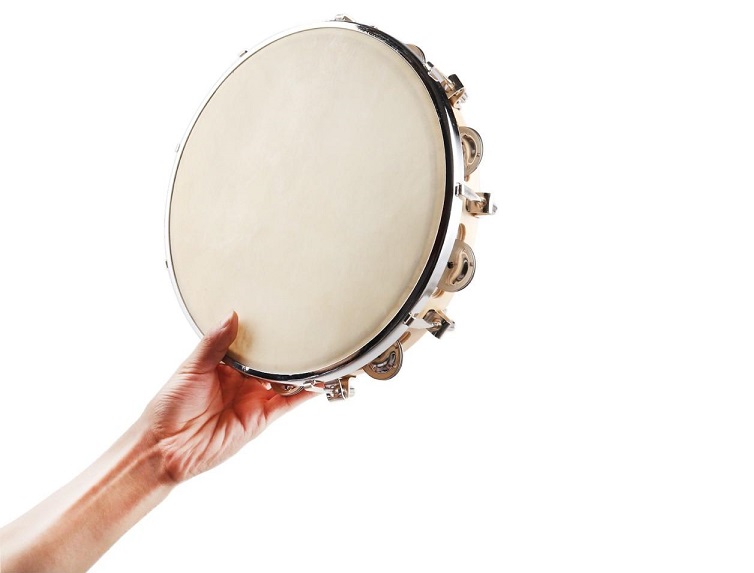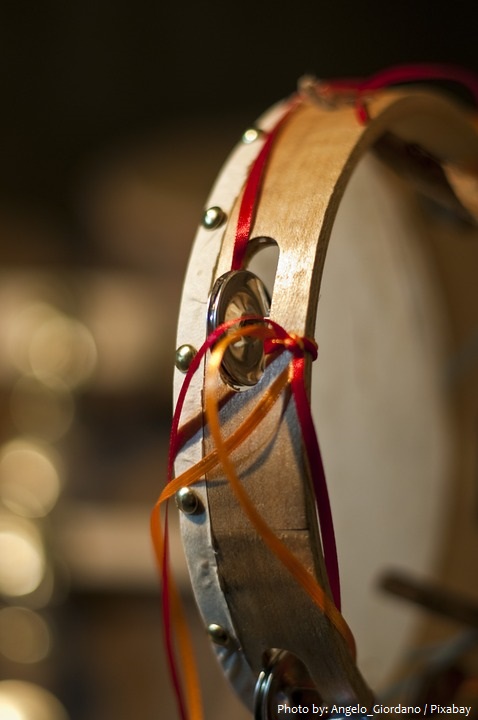
The tambourine is a common percussion instrument.
It consists of a frame, often of wood or plastic, with pairs of small metal jingles, called “zills”.
Tambourines come in many shapes with the most common being circular.
The tambourine is usually held in the hand. The jingles can be made to sound by hitting the frame of the instrument with the other hand, or by shaking the instrument. It can also be hit against the side of the leg.
It is found in many forms of music: Turkish folk music, Greek folk music, Italian folk music, classical music, Persian music, samba, gospel music, pop music, country music, and rock music.

The origin of the tambourine is unknown, but it appears in historical writings as early as 1700 BC and was used by ancient musicians in West Africa, the Middle East, Turkey, Greece and India.
Tambourines were used in ancient Egypt, where they were known as the tof to the Hebrews, in which the instrument was mainly used in religious contexts.
The tambourine passed to Europe by way of merchants or musicians.
It can be seen depicted in sculptures from the 2nd Century in Rome, and it remains virtually unchanged for many centuries – even seemingly unchanged until today, in some cultures.
In the Middle Ages the tambourine was common all over Europe.
In medieval Britain it was known first as the tymbre, and until the 18th century as the tabret or timbrel. In France, Spain (where it is called the pendereta) and in southern Italy its importance as a folk instrument has never diminished. But the tambourine as a part of folk entertainment is not
confined to Europe – it is also found in many other cultures, for instance in China, India, Peru, Greenland, the Caucasus and central Asia.
Wolfgang Amadeus Mozart was among the earliest western composers to include the tambourine in his compositions.
Since the late 18th century it has become more common in western orchestral music, as exemplified in some of Pyotr Ilyich Tchaikovsky’s dance pieces from the Nutcracker Suite. Gustav Holst’s seven-movement orchestral suite The Planets also features the tambourine in several places,
especially in the “Jupiter” movement. Georges Bizet’s Carmen opera includes the famous “Habanera” aria which has a series of tambourine strikes in each chorus.

The Romani people (Gypsies) used the tambourine as a percussion instrument, and it was often passed around the audience to collect money after a performance.
In the late 19th century, The Salvation Army codified the tambourine as one of their important rhythm instruments. They preferred the term “timbrel” which was taken from the Bible. By 1945, Salvation Army performances often entailed elaborate tambourine choreography performed by squads in para-military style, more for visual appeal than for musicality.
Today, it is especially common in Mediterranean countries where it serves as a rhythm instrument accompanying songs and dances. It is either struck with the hand or shaken.
The word “tambourine” finds its origins in French tambourin, which referred to a long narrow drum used in Provence, the word being a diminutive of tambour “drum,” altered by influence of Arabic tunbur “drum”. from the Middle Persian word tambūr “lute, drum”.
The tambourine is one of the easiest musical instruments to play.
An orchestral tambourine traditionally has twenty pairs of jingles.
There are several ways to achieve a tambourine roll. The easiest method is to rapidly rotate the hand holding the tambourine back and forth, pivoting at the wrist.

The largest tambourine / timbrel measures 185.5 cm (6 ft 1 in) in diameter and is 36.5 cm (1ft 2 in) deep. It was created by Roberto A. Cortes Santiago (Puerto Rico) and presented and measured in Cayey, Puerto Rico, on 14 October 2010. Roberto created the timbrel between 2007 and 2008 but it was only measured for the record in 2010.
The largest tambourine ensemble was achieved by 12,323 participants in an event organised by Amway (Chinese Taipei), in Taipei City, Chinese Taipei, on 9 December 2012.

